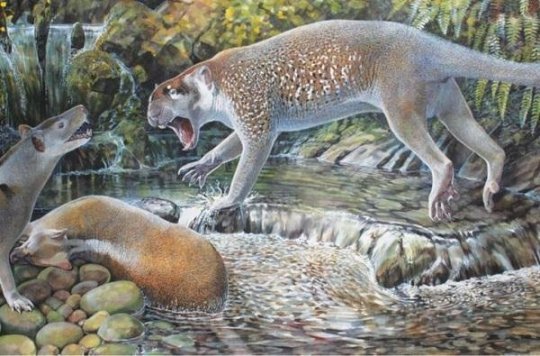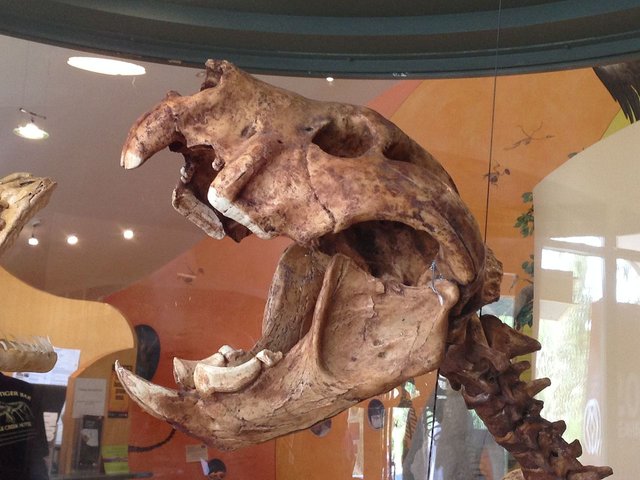A team of Australian scientists has discovered a new species of marsupial lion which has been extinct for at least 19 million years. The findings are based on fossilized remains of the animal's skull, teeth, and humerus (upper arm bone) found in the Riversleigh World Heritage Area of remote northwestern Queensland.

Reconstruction of Wakaleo schouteni challenging the thylacinid Nimbacinus dicksoni over a kangaroo carcass in the late Oligocene forest at Riversleigh.
Credit: Illustration by Peter Schouten in the Journal of Systematic Palaeontology
Named in honour of palaeoartist Peter Schouten, Wakaleo schouteni was a predator that stalked Australia's abundant rainforests some 18 to 26 million years ago in the late Oligocene to early Miocene era. This meat-eating marsupial is estimated to have been about the size of a dog and weighed around 23 kilograms.
The new species is about a fifth of the weight of the largest and last surviving marsupial lion, Thylacoleo carnifex, that weighed in at around 130 kilograms and which has been extinct for 30,000 years. Members of this family, the Thylacoleonidae, had highly distinct large, blade-like, flesh-cutting premolars that they used to tear up prey.

Hi! I am a robot. I just upvoted you! I found similar content that readers might be interested in:
https://www.sciencedaily.com/releases/2017/12/171206193754.htm
Downvoting a post can decrease pending rewards and make it less visible. Common reasons:
Submit